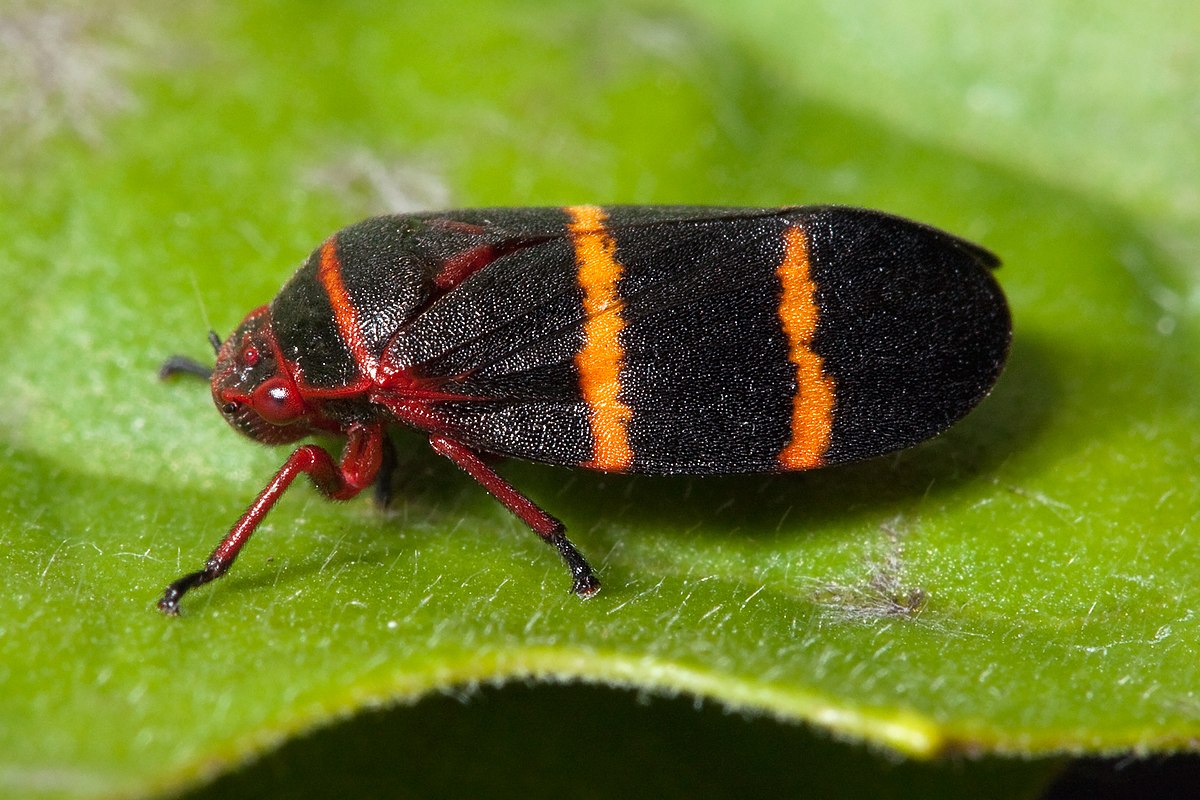Spittlebug Identification and Control
Zoysiagrass and St. Augustine lawns are popular for good reason; they are usually full, lush and green from spring to fall. Right now (June), many of these beautiful lawns are experiencing an infestation of two-lined spittlebugs (pictured above). Last week, we had a few people call or come in and although it’s only Wednesday, we have had triple that many already this week. You may have these and be unaware; take a minute to check your lawn and treat if you find any signs of this insect.
What is a spittlebug?
The image above is of the adult two-lined spittlebug, but it is while they are are still in the nymph stage that spittlebugs do the most damage. Spittlebug nymphs suck plant juices from the blades, weakening them and causing them to turn yellow then brown. In severe cases, the grasses may not recover. If you see the adults, which are black insects featuring two red-orange stripes on their backs, assume you have nymphs feeding and treat appropriately.
Spittlebugs overwinter in egg form, then hatch as nymphs in the spring, transitioning through several nymph stages before molting into adults. It’s during these nymph stages that the spittlebugs create the frothy, spittle mass that gives them their name. The spittle mass protects the nymphs as they feed, keeping them from drying out through the nymph stages before they molt into adults. Adult spittlebugs fly into shrubs in the late summer and early fall, and the subsequent adult feeding causes splotchy, yellowed leaves and premature leaf drop. Two generations of spittlebugs can occur per year. That is a lot of potential damage!
Spittlebug Control
Effective control measures include Bonide Systemic Insect Control (acephate), which is in concentrate form. Horticultural oils are effective when applied during the egg stage. To break the life cycle, treat with horticultural oil in the late winter or early spring of the year following an outbreak. This will kill overwintering eggs and is also a good preventative measure if neighbors have had them recently. For spittlebug control in edible plants, diatomaceous earth is effective during the soft bodied nymph stage, although several treatments may be necessary.
As always, use pest control methods only as directed. Do not apply to drought stressed plants; hydrate plants before applying control methods.
